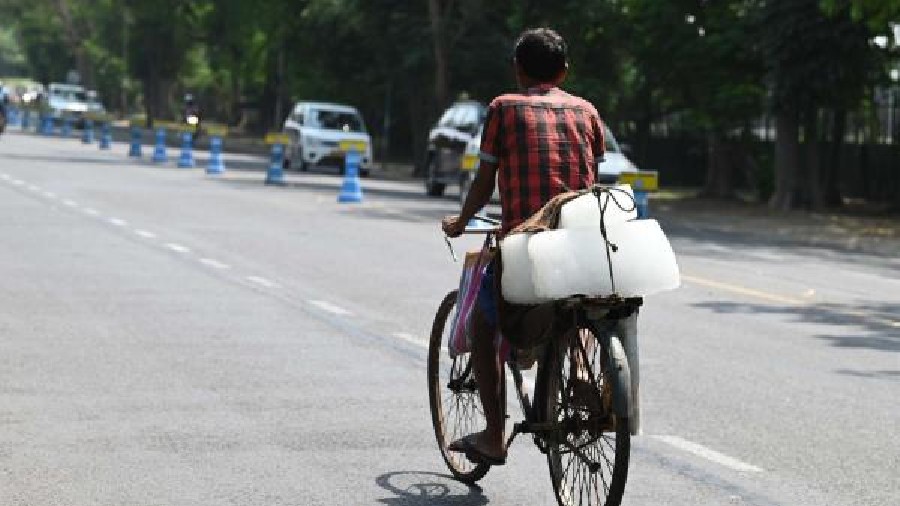The summer not only drives up the demand for potable water but also hits supply by affecting the quality of the water available for treatment, mayor Firhad Hakim has said while explaining the shortage in some parts of the city during the recent spike in temperature.
Speaking at a meeting of the councillors on Friday, Hakim said the water level in rivers goes down during the summer months, which creates a problem for the collection of water that is treated to make potable water.
Hakim said there was no “acute crisis” but admitted that certain parts of the city had some water scarcity.
He said areas like Dhakuria, Jadavpur and Tollygunge in the south depended largely on water extracted from underground.
The mayor was answering a question on inadequate water supply raised by a councillor.
“The water level in the river drops during summer. Much of the water taken from the river is sludge. This affects the process of turning raw water to potable one.”
An official of the Kolkata Municipal Corporation (KMC) said that extreme heat depletes the water level in the Hooghly, from where the kMC collects water that is treated and turned into potable water.
“Since the water availability in the river is less, the production is also hampered,” said the official.
Every year the KMC has to increase the supply of potable water through tankers to water-scarce pockets.
Officials admitted that over the years, the number of such tankers being sent to water-scarce pockets has increased.
The Garden Reach water treatment plant can treat and produce 210 million gallons of potable water in a day. The capacity of the Palta water treatment plant and the Dhapa water treatment plant are 260 million gallons and 30 million gallons daily, a KMC official said. Each of the other two plants — in Jorabagan and Watgunge — can treat and produce about 4 million gallons of water daily, he added.
A section of KMC officials said the KMC produced enough volume of potable water to meet the needs of Kolkata’s population but an indiscriminate waste created the problem. “Fifteen percent of waste is accepted across the world, but in Kolkata, the volume is much higher,” saidan official.
He said the waste happens in the water supply distribution network and also inside households.
“We still come across apartments and houses where water overflows from a tank but no one cares to stop it,” said an official.
